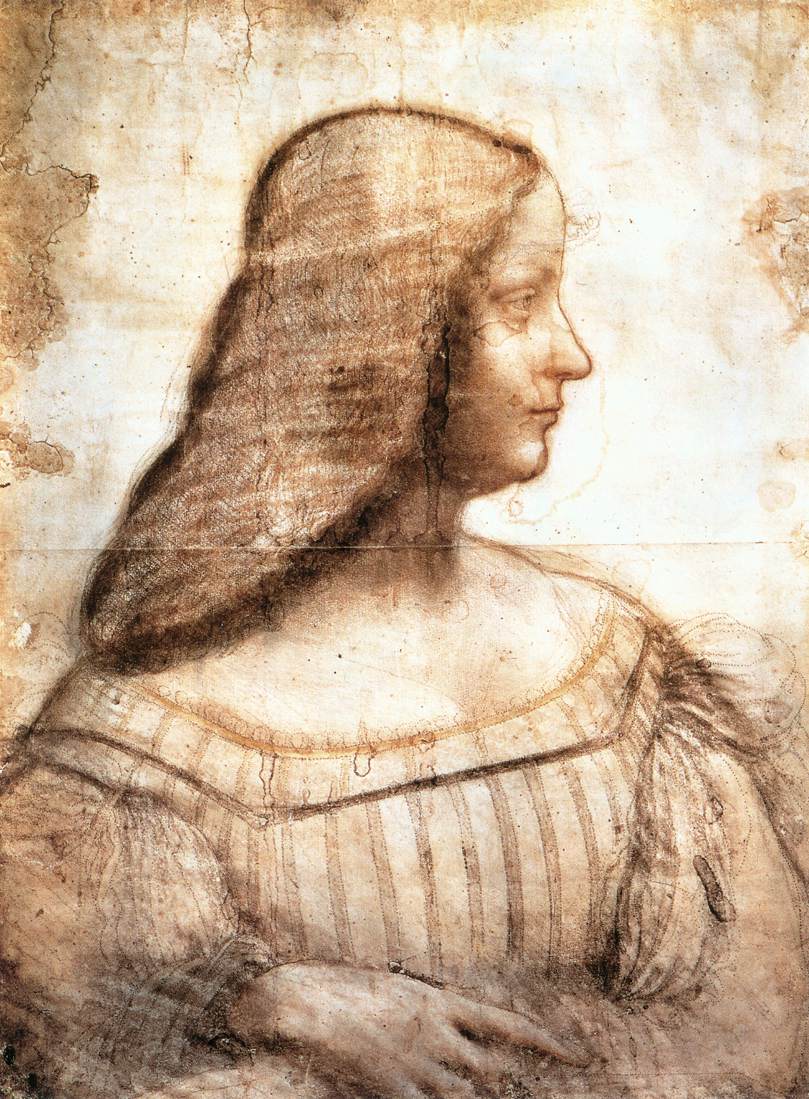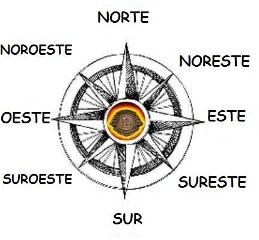ESTE (ES-tay)
1.
The House of Este is a European princely dynasty
2. A town of
northern Italy
3. East in Spanish
Common clues: Renaissance
family; Noble Italian name; Villa d'_____; Punta del ____; Ferrara
family name; Town near Padua; 90 degrees from norte; Spanish
direction
Crossword
puzzle frequency:
7 times a year
Frequency
in English language:
63653 / 86800
Video: Este,
Italy
The House of Este is a European princely dynasty. It is split into two branches: the elder branch is known as the House of Welf-Este or House of Welf, and the younger branch as the House of Fulc-Este or later simply as the House of Este.

Isabella d’Este was eager to have Leonardo da Vinci do a portrait of her. The drawing above (probably sketched in Mantua in 1500) is probably a study for that portrait. It is thought that Leonardo lost interest in the project and avoided her as much as possible. She spent the next four years insisting, offering commissions, and begging, but it is almost certain that the project was never completed.
The elder branch of the House of Este, the House of Welf, produced dukes of Bavaria (1070–1139, 1156–1180), dukes of Saxony (1138–1139, 1142–1180), a German king (1198–1218), dukes and electors of Brunswick and Lüneburg (1208–1918), kings of Hanover (1815–1866), and monarchs of the United Kingdom (1714–1901).
The younger branch of the House of Este included rulers of Ferrara (1240–1597), and Modena and Reggio (1288–1796).
***
Este is a town and comune of the Province of Padua, in the Veneto region of northern Italy. It is situated at the foot of the Euganei Hills. The town is a centre for farming, crafts and industry worthy of note.

During the Iron Age Este was a major centre of the Veneti and later, during the 2nd century BC, it became a Roman colony. In the Late Antiquity, Este was wrecked by barbarian invasions and arose again only after the 10th century, when Azzo II d'Este built a castle there and named himself and his family after it.
The House of Este held the city until 1240, when they moved their capital to Ferrara. Este was conquered twice by Ezzelino da Romano III, in 1238 and 1249, and disputed during the 14th century by the Scaligeri, the Carraresi and the Visconti, until it surrendered spontaneously to Venice in 1405.
Under the Republic of Venice, Este went through a period of economic growth, interrupted only by the plague of 1630. After the fall of the Republic and the Napoleonic Wars, the town, with the whole Veneto region, became part of the Austrian Empire, until it was annexed by the Kingdom of Italy as a consequence of the Third Independence War of 1866.
***

Spanish compass points
This article is licensed under the GNU Free Documentation License. It uses material from the Wikipedia article "House of Este" and “Este, Italy”.
RUE (424) 64 Tu+ >1
|
|